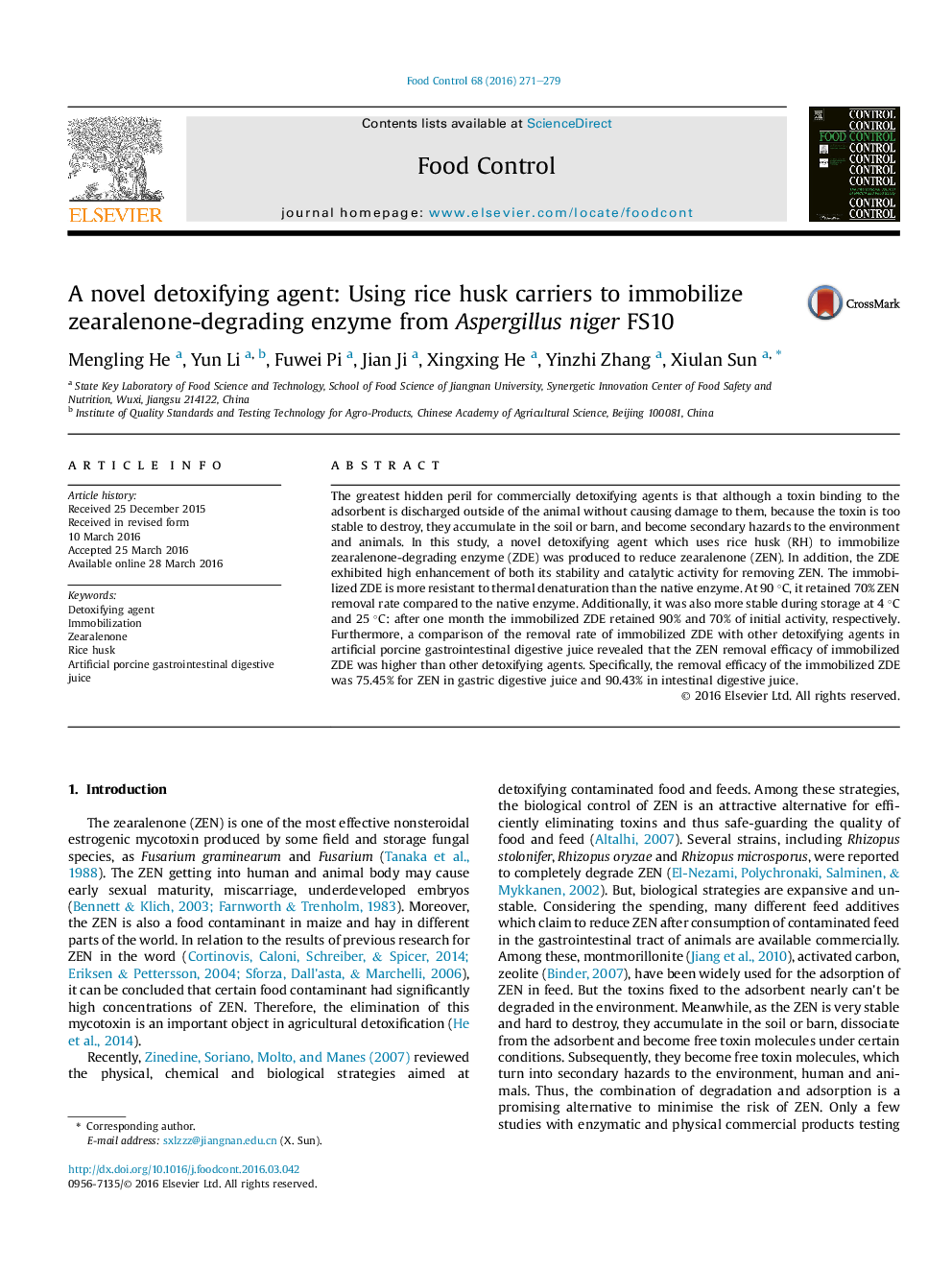| کد مقاله | کد نشریه | سال انتشار | مقاله انگلیسی | نسخه تمام متن |
|---|---|---|---|---|
| 4559052 | 1628394 | 2016 | 9 صفحه PDF | دانلود رایگان |

• A novel detoxifying agent for removing ZEN by immobilizing ZEN-degrading enzyme on rice husk is fabricated.
• The ZEN-degrading enzyme manifests relatively good stability, thermostability compared with the native enzyme.
• The removal efficiency of the produced detoxifying agent exerts admirably as respect to the commercial detoxifying agents.
The greatest hidden peril for commercially detoxifying agents is that although a toxin binding to the adsorbent is discharged outside of the animal without causing damage to them, because the toxin is too stable to destroy, they accumulate in the soil or barn, and become secondary hazards to the environment and animals. In this study, a novel detoxifying agent which uses rice husk (RH) to immobilize zearalenone-degrading enzyme (ZDE) was produced to reduce zearalenone (ZEN). In addition, the ZDE exhibited high enhancement of both its stability and catalytic activity for removing ZEN. The immobilized ZDE is more resistant to thermal denaturation than the native enzyme. At 90 °C, it retained 70% ZEN removal rate compared to the native enzyme. Additionally, it was also more stable during storage at 4 °C and 25 °C: after one month the immobilized ZDE retained 90% and 70% of initial activity, respectively. Furthermore, a comparison of the removal rate of immobilized ZDE with other detoxifying agents in artificial porcine gastrointestinal digestive juice revealed that the ZEN removal efficacy of immobilized ZDE was higher than other detoxifying agents. Specifically, the removal efficacy of the immobilized ZDE was 75.45% for ZEN in gastric digestive juice and 90.43% in intestinal digestive juice.
Journal: Food Control - Volume 68, October 2016, Pages 271–279